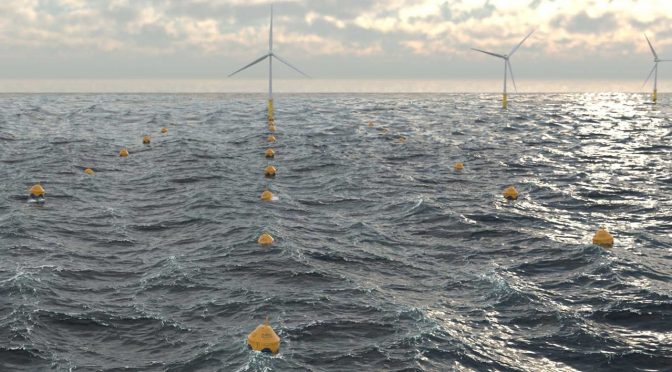California’s energy regulator has unveiled an ambitious set of offshore wind targets as part of a broader statewide push to make electricity 100 percent renewable by 2045.
Approximately 3 gigawatts of offshore wind should be powering the state’s grid by 2030 — enough to power about 3 million average homes in the state, the California Energy Commission determined.
An additional 7-12 gigawatts should be available by 2045 — boosting the state’s total offshore wind capacity to about 10-15 gigawatts by that time, according to a draft report published Friday.
The report also acknowledged that California has upwards of 21.8 gigawatts of offshore wind capacity, with the potential for greater technological developments to boost production over the next few decades.
“These preliminary megawatt planning goals are established at levels that can contribute significantly to achieving California’s climate goals,” the report stated.
Local and national environment groups applauded the targets, calling them critical to eventually powering the state solely through renewable energy sources.
“The powerful winds off the Pacific coast are one of California’s largest untapped sources of renewable energy,” Laura Deehan, state director of Environment California Research and Policy Center, said in a statement.
The announced targets mean “that now we are really sailing towards a brighter, 100 percent renewable future,” she added.
Officials released the targets after legislation passed last year tasked the agency with developing a strategic plan for offshore wind development by June 30, 2023. That included releasing wind megawatt planning goals for 2030 and 2045 by June 1 of this year.
The initial 3 gigawatts planned for 2030 would likely come from one of two places, the report found.
The first would be a full build-out of the Morro Bay Wind Energy Area — a 399-square mile zone off California’s central coast, identified last year by the federal Bureau of Ocean Energy Management.
The second option would involve a combination of a partial build-out of Morro Bay and the Humboldt Wind Energy Area, located off the northern coast, according to the report.
While the northern coast’s wind resources are among “the best in the world with high renewable energy potential and wind speeds consistent and favorable for commercial development,” that area is isolated from the state’s grid and would require new transmission infrastructure, the report authors noted.
Transmission along the central coast, meanwhile, is already robust and located near large load centers, according to the report. The Central Coast also provides opportunities to repurpose aging infrastructure, such as the 2.2-gigawatt Diablo Canyon Nuclear Power Plant, the authors added.
Last year, President Biden announced a goal of deploying 30 gigawatts of offshore wind capacity nationwide by 2030 while creating a pathway toward 110 gigawatts by 2050.
Two months later, the administration reached an agreement with California to advance specific wind energy development projects off the state’s northern and central coasts, as The Hill previously reported.
At the time, the Interior Department said initial areas of development could bring up to 4.6 gigawatts of energy to the grid and the federal government aimed to begin selling wind energy leases in mid-2022.
So far, the Bureau of Ocean Energy Management has conducted competitive lease sales solely on the East Coast, while the agency has designated three areas off the coast of California for possible wind energy projects: Humboldt on the northern coast Coast and Morro Bay and Diablo Canyon off the central coast, according to the report.
Prior to the publication of the draft report on Friday, a coalition of environmental groups — called Offshore Wind Now — sent a letter to Gov. Gavin Newsom (D) stressing the urgency of advancing the offshore wind sector.
By setting an ambitious goal, they argued, the state will “send a strong signal to the market and to the federal government that California needs and is preparing for offshore wind.”
Following the report release, Johanna Neumann, a senior campaign director at Environment America, added that “the sooner we tap into America’s abundant offshore wind potential, the sooner we’ll have cleaner air and less global warming pollution.”
“California set a goal for 100% clean energy and today’s step forward shows they are serious about hitting it,” she said.
Sharon Udasin


